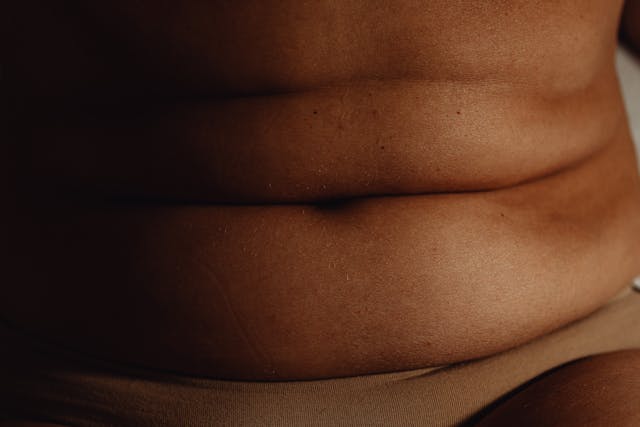Angiogenesis and the Loss of Stubborn Belly Fat
Angiogenesis is the process by which new blood vessels form from pre-existing ones. When considering the expansion of certain tissues, such as adipose tissue or muscles, it is essential to think about how these tissues are supplied with oxygen, nutrients, and how their metabolic byproducts are removed. This process relies on blood vessels, and larger tissues require new blood vessels to support them, much like extending water and electricity to a growing residential area. But what exactly is the relationship between angiogenesis and fat loss or obesity? Can newly formed blood vessels contribute to obesity or aid in fat reduction?
Current scientific understanding suggests that angiogenesis promotes obesity, according to a study [1]. Newly formed blood vessels, particularly endothelial cells, secrete factors that influence pre-adipocytes (immature fat cells), enhancing the adipose tissue’s ability to grow. This bidirectional interaction between fat cells and endothelial cells creates a feedback loop that fuels obesity and supports its expansion. Studies, particularly in mice, have shown that inhibiting angiogenesis can contribute to weight loss.
This perspective takes angiogenesis seriously as a potential approach to tackling obesity, similar to its proposed use in cancer treatment [2]. What if we could starve adipose tissue of nutrients and sustenance, just as we might deprive cancerous tissue? It would likely diminish.
However, there’s another side to consider: the increase in angiogenesis resulting from exercise, whether resistance training or high-intensity interval training (HIIT). Research has shown that both types of exercise promote angiogenesis in skeletal muscle tissue [3]. This can be observed in individuals who engage in weightlifting, for example, despite other factors like fat loss in these individuals. Studies have also found that exercise can increase the production of vascular endothelial growth factor (VEGF), a key driver of angiogenesis [4]. Increased VEGF levels lead to greater blood vessel formation in various tissues, including adipose tissue. However, it’s overly simplistic to view this one-dimensionally, as it’s well-established that exercise contributes to fat loss. So, how should we view angiogenesis in this context? What about localized increases in angiogenesis due to exercise? This question arises in the context of a balanced diet, a healthy lifestyle, and stubborn fat deposits, such as those in the lower abdomen, which many experience without necessarily being obese.
Looking at another aspect of research, blood circulation in adipose tissue doesn’t solely involve supplying fat cells with more triglycerides for storage. In conditions favoring fat loss, free fatty acids and glycerol can be released from adipose tissue into the bloodstream. Increased blood flow to adipose tissue during exercise facilitates the release of more free fatty acids [5]. However, such studies don’t necessarily address angiogenesis directly. They simply highlight a logical duality: blood vessels can act as a double-edged sword. It’s also known that areas like visceral fat in the waist and abdomen have relatively lower blood vessel density. While some studies suggest reducing blood flow could aid fat loss, we’re focusing here on a specific scenario: fat loss with stubborn areas, despite an overall caloric deficit.
A study by the British Heart Foundation (BHF) explains that poor blood circulation in adipose tissue can turn it “harmful,” leading to the release of inflammatory signals that contribute to diabetes, hypertension, and high cholesterol—all risk factors for atherosclerosis and heart disease. Researchers have noted the paradox of “healthy obesity,” where some overweight individuals show no signs of metabolic issues like elevated blood sugar or cholesterol, a phenomenon described as “fat but fit.” This may be due to better blood supply to adipose tissue, which maintains its function and protects against long-term cardiovascular problems.
Another layer to this topic is that angiogenesis can occur locally in muscles. Multiple studies on muscles and angiogenesis confirm this. Whether through angiogenesis or other mechanisms, research supports localized fat loss when targeting specific areas, such as the abdomen, with aerobic exercises rather than general aerobic activities like running [6].
While I had hoped to find stronger evidence supporting localized fat loss in stubborn areas, as proponents of “real science,” we’ll leave this for future research or studies we couldn’t cover. We can weave together these threads but cannot definitively confirm whether angiogenesis plays a direct role in localized fat loss. What we can say is that localized fat loss is possible with targeted aerobic exercises, that angiogenesis occurs as a result of exercise, and that angiogenesis is a double-edged sword. Depending on the dietary approach, it could either contribute to breaking down adipose tissue and promoting fat loss or, if inhibited, may aid in weight loss.
References
1: Nijhawans, Priya, et al. “Angiogenesis in obesity.” Biomedicine & Pharmacotherapy 126 (2020): 110103
2. : Targeting Angiogenesis to Lose Weight, Michael Greger M.D. FACLM · July 26, 2023 · Volume 62
3. Tryfonos, Andrea, et al. “Exercise training enhances angiogenesis-related gene responses in skeletal muscle of patients with chronic heart failure.” Cells 10.8 (2021): 1915
4. Ferrara, Napoleone. “Vascular endothelial growth factor.” Arteriosclerosis, Thrombosis, and Vascular Biology 29.6 (2009): 789-791
5. Deyhle, M. R., et al. “The physiology of fat loss.” IDEA Fit J (2014): 37-44
6. Brobakken, Mathias Forsberg, et al. “Abdominal aerobic endurance exercise reveals spot reduction exists: A randomized controlled trial.” Physiological Reports 11.22 (2023): e15853


0 Comments